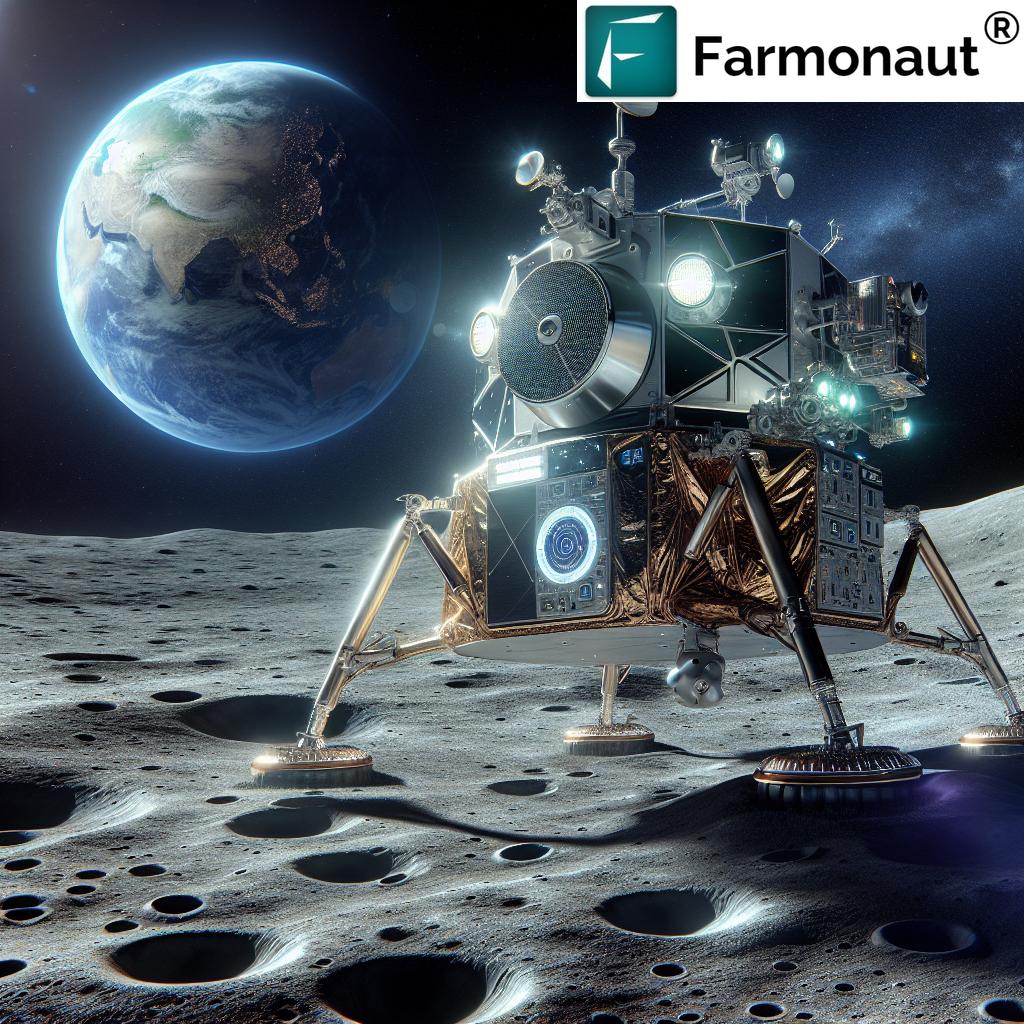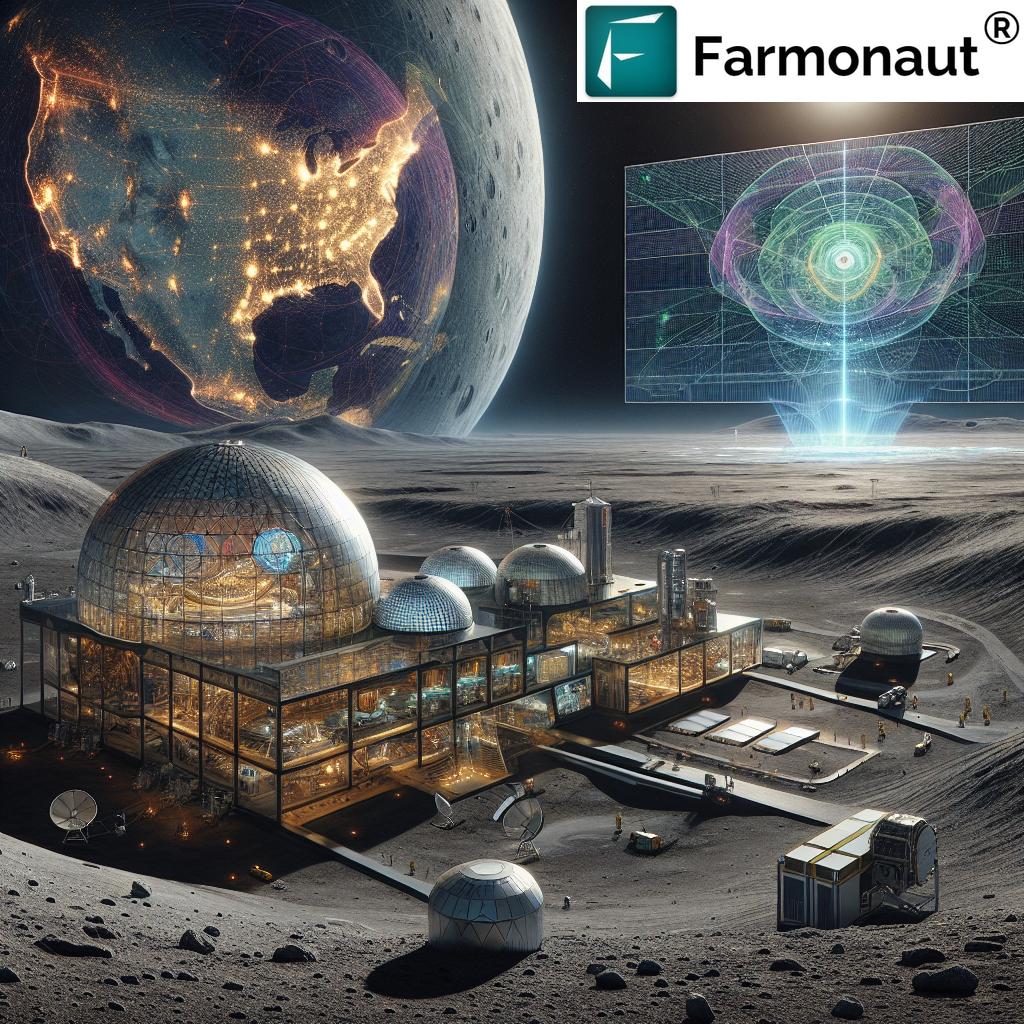Unveiling Lunar Exploration: Groundbreaking NASA Technology Advances Moon to Mars Missions
“NASA’s upcoming CLPS mission will launch a lunar lander carrying multiple payloads, including a drill to detect volatiles in lunar soil.”
As we embark on a new era of lunar exploration, NASA’s groundbreaking technologies are paving the way for unprecedented discoveries and advancements in space science. In this comprehensive blog post, we’ll delve into the exciting developments that are shaping the future of lunar exploration and NASA’s ambitious Moon to Mars exploration approach.
The Dawn of a New Lunar Era
NASA’s Commercial Lunar Payload Services (CLPS) initiative, a cornerstone of the Artemis campaign, is set to launch a lunar lander carrying vital science and technology payloads to the Moon’s surface. This mission represents a significant leap forward in lunar exploration technology, combining cutting-edge spacecraft laser technology with crucial lunar environment research.
As we prepare for this monumental event, let’s explore the key innovations and objectives that make this NASA moon mission a game-changer in our quest to understand and utilize lunar resources.

The CLPS Initiative: A New Approach to Lunar Exploration
The Commercial Lunar Payload Services (CLPS) initiative is a revolutionary approach to lunar exploration. By partnering with commercial companies, NASA aims to accelerate lunar surface science and prepare for future human missions to the Moon and Mars. Here’s what makes CLPS unique:
- Rapid deployment: CLPS allows for more frequent and cost-effective missions to the lunar surface.
- Diverse payloads: Multiple scientific instruments and technology demonstrations can be sent on each mission.
- Commercial partnerships: Collaboration with private companies fosters innovation and reduces costs.
This approach aligns perfectly with NASA’s Moon to Mars exploration strategy, creating a sustainable presence on the Moon as a stepping stone to deeper space exploration.
Cutting-Edge Payloads: Advancing Lunar Surface Science
The upcoming CLPS mission will carry a suite of advanced instruments designed to expand our understanding of the lunar environment and pave the way for future human exploration. Let’s examine some of the key payloads:
1. Volatile-Detecting Drill
One of the most exciting instruments on board is a drill equipped with a mass spectrometer. This technology will:
- Detect and measure volatile compounds in lunar soil
- Provide crucial data on potential water resources
- Help assess the feasibility of in-situ resource utilization (ISRU) on the Moon
Understanding the presence and distribution of volatiles is essential for planning long-term lunar missions and potential Mars expeditions.
2. Laser Retroreflector Array (LRA)
The Laser Retroreflector Array is a passive device that will serve as a permanent navigation aid on the lunar surface. Its capabilities include:
- Reflecting laser light back to orbiting or incoming spacecraft
- Providing precise location data for future lunar missions
- Enhancing our understanding of lunar dynamics and gravity
This technology demonstrates NASA’s commitment to establishing a sustainable infrastructure for lunar exploration.
3. Propulsive Drone
A revolutionary propulsive drone will be deployed to explore the lunar surface. This innovative technology offers:
- Ability to “hop” across the lunar terrain
- Exploration of areas inaccessible to traditional rovers
- Potential for rapid data collection over large areas
The propulsive drone represents a new paradigm in lunar surface exploration, offering unprecedented mobility and flexibility.
Lunar Trailblazer: Mapping Water on the Moon
“The Lunar Trailblazer spacecraft, part of NASA’s Moon to Mars exploration approach, will map water distribution across the Moon’s surface.”
Launching alongside the CLPS mission is the Lunar Trailblazer spacecraft, a dedicated water-mapping satellite. This innovative mission will:
- Orbit the Moon to create detailed maps of water distribution
- Use advanced spectroscopy to identify different forms of water
- Provide crucial data for planning future lunar resource utilization
The Lunar Trailblazer mission exemplifies NASA’s commitment to understanding and utilizing lunar resources as part of its broader Moon to Mars exploration strategy.
NASA’s Moon to Mars Exploration Approach
The CLPS mission and Lunar Trailblazer are integral parts of NASA’s ambitious Moon to Mars exploration approach. This strategy aims to:
- Establish a sustainable human presence on the Moon
- Develop technologies and systems for long-duration space missions
- Prepare for eventual human missions to Mars
By focusing on lunar exploration and resource utilization, NASA is laying the groundwork for humanity’s next giant leap into the solar system.

The Impact of Lunar Exploration on Earth
While the focus is on lunar and Martian exploration, the technologies developed for these missions have significant implications for life on Earth. Some potential benefits include:
- Advancements in renewable energy and resource management
- Improved environmental monitoring and weather forecasting
- Development of new materials and manufacturing processes
These spin-off technologies demonstrate the far-reaching impact of space exploration on our daily lives.
Comparison of NASA Lunar Exploration Technologies
| Technology | Purpose | Key Features | Estimated Development Timeline | Potential Impact on Moon to Mars Missions |
|---|---|---|---|---|
| Lunar Lander | Deliver payloads to lunar surface | Precision landing, payload capacity, reusability | 2023-2025 | Essential for establishing lunar presence and testing Mars landing technologies |
| Drill for Volatile Detection | Analyze lunar soil composition | Mass spectrometer, deep drilling capability | 2024-2026 | Critical for assessing resource availability for long-term missions |
| Laser Retroreflector Array | Enhance lunar navigation | Passive reflector, long-term durability | 2023-2024 | Improves precision for future landings and orbital operations |
| Propulsive Drone | Explore lunar surface | Hopping capability, autonomous navigation | 2025-2027 | Enables exploration of challenging terrains on Moon and potentially Mars |
| Lunar Trailblazer Spacecraft | Map lunar water distribution | High-resolution spectroscopy, orbital mapping | 2024-2026 | Crucial for planning water resource utilization on Moon and Mars |
The Role of Artificial Intelligence in Lunar Exploration
Artificial Intelligence (AI) plays a crucial role in modern space exploration, including NASA’s lunar missions. AI applications in lunar exploration include:
- Autonomous navigation for landers and rovers
- Real-time data analysis and decision-making
- Predictive maintenance for spacecraft systems
As we continue to push the boundaries of space exploration, AI will become increasingly important in managing complex missions and processing vast amounts of scientific data.
Challenges and Future Prospects
While the advancements in lunar exploration technology are exciting, several challenges remain:
- Radiation protection for long-duration missions
- Dust mitigation on the lunar surface
- Psychological effects of extended space travel
Addressing these challenges will be crucial for the success of future Moon to Mars missions and the establishment of a sustainable lunar presence.
The Global Impact of Lunar Exploration
NASA’s lunar exploration efforts have far-reaching implications beyond the United States. International collaboration and competition in space exploration are driving innovation and fostering diplomatic relationships. Some key aspects include:
- Partnerships with space agencies from other countries
- Sharing of scientific data and resources
- Inspiring a new generation of scientists and engineers worldwide
As we continue to explore the Moon and set our sights on Mars, the global impact of these missions will only grow.
The Future of Lunar Exploration
Looking ahead, the future of lunar exploration is bright. NASA’s ongoing efforts, combined with commercial partnerships and international collaboration, promise to unlock the Moon’s potential as a scientific laboratory, resource hub, and stepping stone to Mars. Some exciting prospects include:
- Establishment of permanent lunar bases
- Development of lunar mining and manufacturing capabilities
- Use of the Moon as a launch pad for deep space missions
These ambitious goals will require continued innovation, investment, and international cooperation.
Conclusion: A New Chapter in Space Exploration
As we stand on the brink of a new era in lunar exploration, the groundbreaking NASA technologies and missions we’ve explored in this blog post are set to revolutionize our understanding of the Moon and pave the way for future Mars missions. From advanced lunar landers and volatile-detecting drills to water-mapping satellites and propulsive drones, these innovations represent the cutting edge of space technology.
The Commercial Lunar Payload Services initiative and NASA’s broader Moon to Mars exploration approach are not just about scientific discovery – they’re about expanding human presence in the solar system and inspiring the next generation of explorers. As we continue to push the boundaries of what’s possible in space exploration, we can look forward to a future where lunar missions are commonplace and human footprints on Mars are within reach.
Stay tuned for more exciting developments as NASA and its partners continue to unveil the mysteries of our celestial neighbor and chart a course for humanity’s journey to the stars.
FAQ Section
Q1: What is the Commercial Lunar Payload Services (CLPS) initiative?
A1: The CLPS initiative is a NASA program that partners with commercial companies to deliver science and technology payloads to the Moon’s surface. It aims to accelerate lunar exploration and prepare for future human missions.
Q2: How does the Laser Retroreflector Array (LRA) work?
A2: The LRA is a passive device that reflects laser light back to its source. When placed on the lunar surface, it provides a fixed reference point for spacecraft navigation and precise distance measurements.
Q3: What is the purpose of the Lunar Trailblazer spacecraft?
A3: The Lunar Trailblazer is designed to map water distribution on the Moon’s surface using advanced spectroscopy. This data is crucial for planning future lunar resource utilization and long-term missions.
Q4: How does NASA’s Moon to Mars exploration approach work?
A4: This approach uses the Moon as a testing ground and stepping stone for technologies and systems needed for Mars missions. It involves establishing a sustainable presence on the Moon before venturing to Mars.
Q5: What are some challenges in lunar exploration?
A5: Key challenges include radiation protection, dust mitigation, psychological effects of long-duration space travel, and developing sustainable life support systems for extended lunar missions.
Earn With Farmonaut: Affiliate Program
Earn 20% recurring commission with Farmonaut’s affiliate program by sharing your promo code and helping farmers save 10%. Onboard 10 Elite farmers monthly to earn a minimum of $148,000 annually—start now and grow your income!
For developers interested in integrating satellite and weather data into their applications, check out the Farmonaut API and the comprehensive API Developer Docs.






